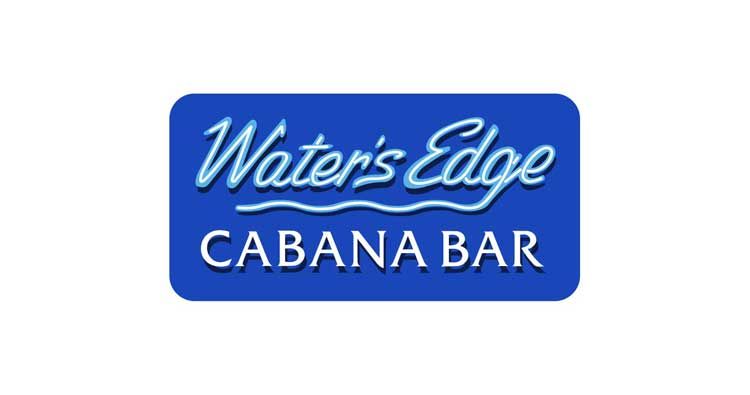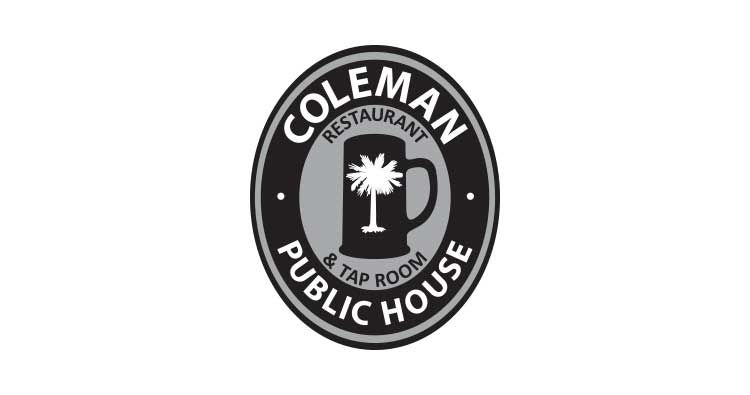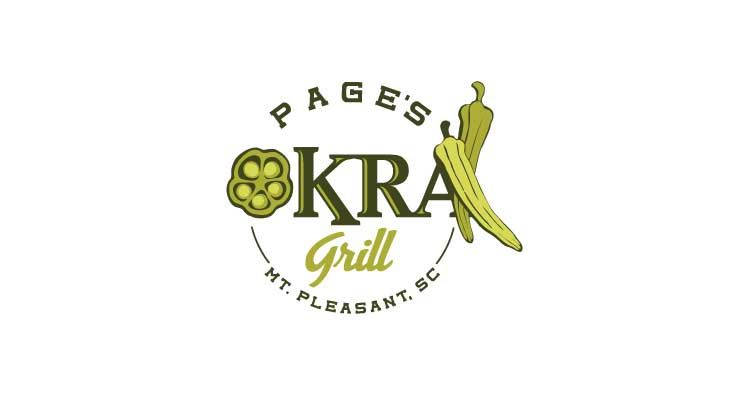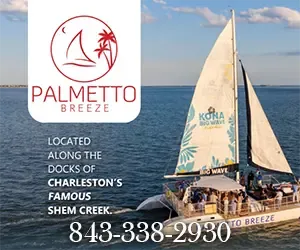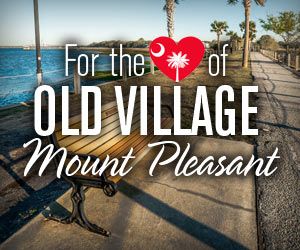The Heart, Soul and History of Shem Creek
This story originally appeared in an early Media Services publication. It has been edited for length and clarity. We hope you enjoy this look at Shem Creek’s history.
-The Editors
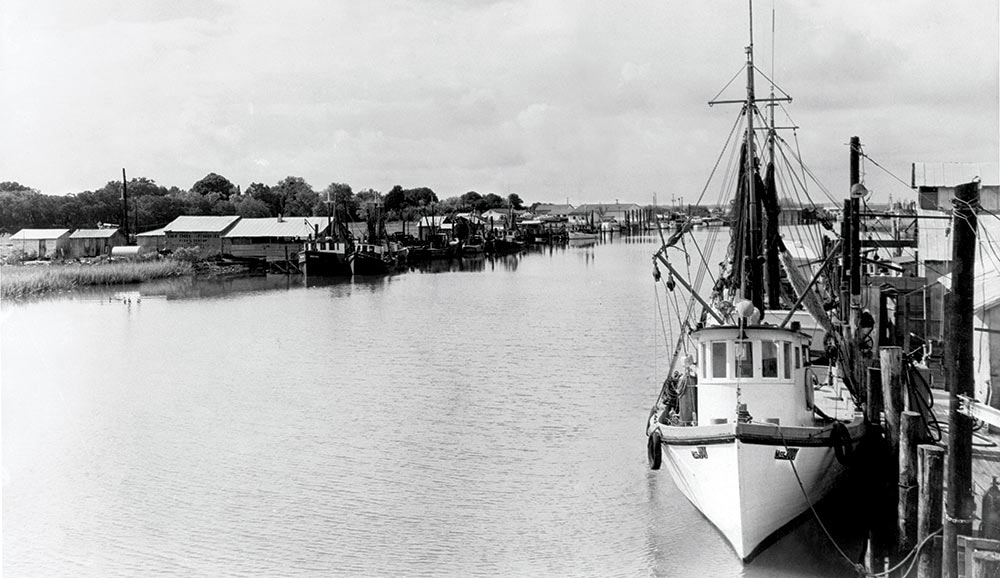
Shem Creek has always been a working creek. It fed the Sewee Indians and ferried the father of our country safely across the harbor. It powered sawmills and rice mills and pumped money into Mount Pleasant’s economy with each net of shrimp the trawlers hauled to the docks. And it worked magic for children, opening arms to generations of little boys and girls who paddled into its currents.
Despite changing tides through the centuries, Shem Creek still provides a livelihood, a playground and a sense of place. It’s the town’s touchstone — a picture-perfect place that will always capture the heart and soul of Mount Pleasant.
Bricks, Buckets, Ferries and Fleets

The Indians are thought to have called the creek Shemee, possibly for a small tribe that lived on its banks. Shem Creek, with its head near present-day Bowman Road, was known in the 1700s by the name of the men who owned land alongside it. Back then, it was Sullivan’s Creek, for Capt. Florence O’Sullivan, the patriot for whom Sullivan’s Island is named; Dearsley’s Creek, for George Dearsley, thought to have been one of the first shipbuilders on the creek; and Parris Creek, after Alexander Parris, who also owned land near Beaufort, where the Parris Island Marine Corps facilities are today.
Shipbuilding made Shem Creek a working creek, but that was far from the only enterprise there. Peter Villepontoux ran a lime kiln on the creek in the 1740s to supply the growing number of brickyards in the Lowcountry. Between 1745 and the start of the Civil War in 1861, more than 50 brickyards had operations on the Wando and Cooper rivers.
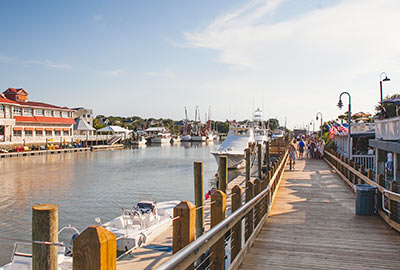
Ferry service made Shem Creek a hub of business as well. In 1770, Englishman Andrew Hibben bought a charter to run a ferry from the south side of Shem Creek to Charleston. Hibben’s Ferry was the first to connect Haddrell’s Point — the name given to the Old Village area, after colonist George Haddrell — with the city of Charleston; other ferries had run from Hobcaw Creek. Hibben charged 33 cents for passengers, 21 cents for horned cattle, 75 cents for two-wheeled carriages and $1.75 for four-wheeled carriages.
In 1795, millwright and inventor Jonathan Lucas built a combination rice mill/sawmill on Shem Creek — the first water-driven rice mill in the area. The man and his work live on in the names of thoroughfares along the creek — Mill Street and Lucas Street, specifically. Lucas’ mill was on the site of an earlier mill called Greenwich Mill, built by landowner Jonathan Scott. In the mid-1800s, John Hamlin’s Mount Pleasant Bucket Factory was on the south side of the creek, in the area of present-day Live Oak Drive and Bennett Street. The factory supplied not only buckets but painted and unpainted pine, cypress, assorted lumber and lathes.
War on the Creek
The Civil War touched Shem Creek, just as it did the rest of the Charleston area. In the early 1860s, workers at Jones Shipyard had built a steamer called The Planter that owner F.M. Jones intended for use by nearby plantations. The vessel was instead put into service as a blockade runner for the Confederacy because of its shallow draft and speed. On May 13, 1862, while the vessel’s white officers were ashore, The Planter’s Black quartermaster, Robert Smalls, and the rest of the Black crew saw their opportunity and seized it. Smalls and his fellow sailors steered the ship out to meet Union vessels at the mouth of the harbor and were later rewarded for their daring feat.
At the time of the war, there was a grist mill on Shem Creek in the area that is now the Shemwood II subdivision. The mill ground rice and corn grown on local plantations. In February 1865, Mount Pleasant’s intendant, Henry Slade Tew, wrote a letter to his daughter telling her of the ill fate that befell the mill:
“I heard that orders had been given to burn the mill and contents … the destruction of the mill itself would deprive the people of a means of having any rice beat or corn ground, and must cause great suffering.”
Tew went to the mill to try to stop the burning, appealing personally to Capt. C.P. Bolton and his cavalry as they approached, bearing torches. He wrote, “He [Bolton] admitted the cruelty of the act … but his orders compelled him to destroy it, and fire was accordingly applied, and the devilish act, I must call it, accomplished.”
Terrapins and Trawlers
More than two decades after the war ended, the modern seafood and boat building industries on Shem Creek were born. In 1890, William Hale was operating an oyster factory on the creek, and in 1895, Capt. Robert Holman Magwood bought the Mount Pleasant Boat Building Co., docking his boats there and operating a turtle crawl. The “Cooter Pen” shipped live diamondback terrapins to the larger cities in the Northeast, where they appeared on menus of the finest hotel restaurants.
By the 1930s, shrimping and boat building were the major industries on the creek. The Darby family bought the Mount Pleasant Boat Building Co. in 1921, and the business thrived, specializing in engine installation, repairs and equipment sales, as well as construction. When the company finally closed in 1990, the boat building business ceased on the creek. While the shrimping industry continues at Shem Creek, it faces pressure from cheap foreign imports and commercial development.
In 2002, the town of Mount Pleasant appointed a special Shem Creek Management Committee to “determine a vision and outline issues of importance to the future of Shem Creek.” After several months spent gathering opinions and information, their conclusion was “that the character of the creek remains as it is — natural, water-dependent, charming — a working creek.”
The Tides of Time on Shem Creek
1680 – Mount Pleasant’s first white settlers arrive from England under the leadership of Capt. Florentia O’Sullivan, who had been granted 2,340 acres, including the current Sullivan’s Island and Mount Pleasant.
1740s – Peter Villepontoux runs a lime kiln on Shem Creek, supplying the Lowcountry’s burgeoning brick business.
1770 – Andrew Hibben’s ferry connects Haddrell’s Point, now referred to as the Old Village, to the city of Charleston. The charge is 33 cents for passengers, 21 cents for cattle and 75 cents for two-wheeled carriages.
1784-1793 – Jonathan Lucas arrives in the new world, possibly after being shipwrecked near Cape Romain at the mouth of the Santee River. He builds water-powered rice mills for planters along the Santee, Waccamaw, Wando, Combahee, Edisto and Ashepoo Rivers and on Winyaw Bay. A mechanical genius, Lucas also erects a windmill on Hog Island, near the mouth of Shem Creek, likely to provide power for a sawmill.
1793-1795 – The Lucas family buys the estate of Jonathan Scott for 500 pounds sterling. Today, the property would be bounded by Shem Creek, McCants Drive, Simmons Street and Myrick Road. Lucas builds an innovative, tidal-powered rice mill and sawmill, with a large holding pond, along the eastern edge of Shem Creek. It is the first mill of its kind in the Charleston area.
1816 – Lucas’ son purchases Haddrell’s Point Plantation and Greenwich Mill on Shem Creek from his father for 2,000 pounds sterling. He obtains a small fleet of sailing vessels to enhance his transportation network.
1835 – The Lucas family buys approximately 180 acres on Shem Creek, between the Lucas Mill and the Ferry Tract. This property is laid out as the town of Lucasville, which later becomes the town of Mount Pleasant.
1862 – The Planter, a steamer intended for use by nearby plantations, is built at Jones Shipyard on Shem Creek. The vessel is instead pressed into service as a blockade runner for the Confederacy. On May 16, while the steamer’s white officers are ashore, Black quartermaster Robert Smalls and an all-Black crew steer the ship out to join up with Union vessels at the mouth of Charleston Harbor.
1865 – Confederate troops burn the Lucas buildings and Greenwich Mill to prevent supplies from falling into the hands of the approaching Union army. All that remains of the once-thriving business are what’s left of the brick and timber foundations of the mill, wooden posts that once reinforced the dikes and a small cemetery.
1890 – William Hale launches the modern seafood industry on Shem Creek, operating an oyster factory.
1895 – Capt. Robert Holman Magwood buys the Mount Pleasant Boat Building Co., docking his boats there and also operating a turtle crawl that produces live diamondback terrapins for restaurants in Northeastern cities.
1930s – Shrimping and boat-building are Shem Creek’s major industries.
1945 – A Shem Creek fixture, Mount Pleasant Seafood, is established by W.D. Toler.
2002 – The Town of Mount Pleasant forms the Shem Creek Management Committee to “determine a vision and outline issues of importance to the future of Shem Creek.”
2009 – A 3.4-acre tract at the headwaters of Shem Creek, near James B. Edwards Elementary School, is donated to the Mount Pleasant Open Space Foundation by the
East Bay Company. The land will be protected from development and will provide an outdoor classroom setting for students.
2011 – Shem Creek Park opens in October 2011. A 2,200-foot-long boardwalk stretches from just beyond the Shem Creek Bridge on Coleman to the mouth of the Charleston Harbor.
2013 – The town of Mount Pleasant approves a parking garage/mixed use building on the corner of Mill Street and Coleman, just a stone’s throw away from Shem Creek.
2016 – The town of Mount Pleasant rules to condemn the OK Tire property on the northern side of Shem Creek. The city opens an additional 1,500-foot-long section of the boardwalk that connects to the original, providing spectacular birding opportunities.
2019 – The pedestrian bridge over Shem Creek is complete. The bridge connects the Coleman Boulevard sidewalk near Tavern & Table to the boardwalk near Mount Pleasant Seafood on the other side of the creek.
2020 – The Mount Pleasant Town Council voted to name the Shem Creek pedestrian bridge in honor of Captain Wayne Magwood and his family. It will be called Magwood Boardwalk.
Shem Creek Restaurants (On & Near Shem Creek)
Search This Site


About Shem Creek
Shem Creek offers waterfront activities, picturesque views of its marshes and the Charleston Harbor, a boardwalk, as well as a park and many restaurants. Dive in and read about this Mount Pleasant, SC gem and all of the yummy treats it has to offer.
